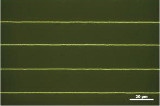- Home
- Research
- Education & Outreach
- Facilities
- Industry
Sensors & Environmental Monitoring (TRG 3)
Co-Leaders
Vincent Rotello (Chemistry) and Richard Vachet (Chemistry)
Participating Faculty
Kathleen Arcaro (Veterinary & Animal Science), David Ford (Chemical Engineering), Julie Goddard (Food Science), Sam Nugen (Food Science), Jonathan Rothstein (Mechanical & Industrial Engineering), Maria Santore (Polymer Science & Engineering), Sankaran Thayumanavan (Chemistry). James Watkins (Polymer Science & Engineering)
In TRG 3, Sensors and Environmental Monitoring, the CHM recognizes that engineered nanomaterials provide both opportunities and challenges in environmental and health sciences. The TRG is creating new systems for on-chip separations, diagnostics and environmental monitoring that incorporate unique and enabling technology developed in TRG 1 and the test beds. A second effort includes new strategies for tracking nanomaterials in the environment and assessing their toxicity and biodistribution in plant and animal species. This effort is relevant not only to the use of nanoparticles in CHM projects, but also to their use throughout the nanomanufacturing and nanoscience communities.
Current TRG 3 Research
Biological Applications of Nanoparticles
- Studies of monolayer structure and stability on functionalized gold nanoparticles, impacting other research including successful fabrication of nanoparticle-based enzyme mimics, control of enzyme behavior through protein-nanoparticle interactions, and polymer- and DNA-mediated assembly of nanoparticles.
- Research on the use of gold nanoparticles for transfection of genetic material, demonstrating that nanoparticles with photocleavable side chains can be used to control DNA release in mammalian cells.
- Testing of nanoparticle-based delivery systems in three-dimensional in vitro tumor models and animal models, using novel imaging techniques to provide radial profiles of cell subpopulations and nanoparticles.
- Development of scalable techniques for manufacturing water-dispersible ZnSe nanoparticles.
- Through surface functionalization of ZnSe nanoparticles with oligonucleotides, these particles demonstrate a dose-dependent enhancement of their fluorescence intensity upon conjugation with the complementary nucleotide sequence. Ensuing patent applications and industrial interactions now underway may lead to test beds for nanoparticle-based therapies and next-generation biological assays and sensors.
- Exploration of fluorescent ZnSe quantum dots in immunoassays and for the stabilization of protein, and researching the effects of surface functionality on cellular uptake of quantum dots and their toxicity using flow cytometry.
Bioactive Polymers for Tissue Engineering, Drug Delivery, and Antimicrobial Surfaces
- Development of biocompatible block copolymers that self-assemble to form hydrogels with hierarchical structures on length scales spanning 10 nm to several hundred microns, which is beneficial for transport, cell seeding, and cell motility within tissue engineering scaffolds. Further research is ongoing exploring the effect of nanoparticle surface chemistry on the gel modulus and self-assembly.
- Development of biocompatible nanoparticle- and nanodisc-reinforced gels for tissue engineering. Current and future efforts focus on processing techniques for shear-aligning nanodiscs within these gels to create tissue engineering scaffolds with novel anisotropic properties.
- Synthesis of novel amphiphilic polymers that bind metalloproteins for drug delivery applications.
- Fundamental research on how a novel class of antimicrobial polymers target bacterial versus mammalian cell membranes. These novel polymers act directly on the phospholipid membrane of the cell and show high specificity for bacterial membranes. The program addresses the hypothesis that it is not simply differences in membrane charge (between bacterial and mammalian cells), but more generally the nature of the phospholipid headgroups that play the critical role in modulating interactions with these antimicrobial polymers.
Sensors for Biomolecules
- Development of “chemical nose”-based sensors that use selective recognition of proteins by nanoparticles to identify proteins. In this system, release of fluorophores from the strongly quenching nanoparticle provides transduction of the binding process.
- Creation of sensors based on sparse distribution of nanoparticles on surfaces. Preliminary studies have shown that these systems can discriminate between polymer beads of differing sizes and charges. Ongoing experiments are focused on the use of this protocol for cell sorting.













